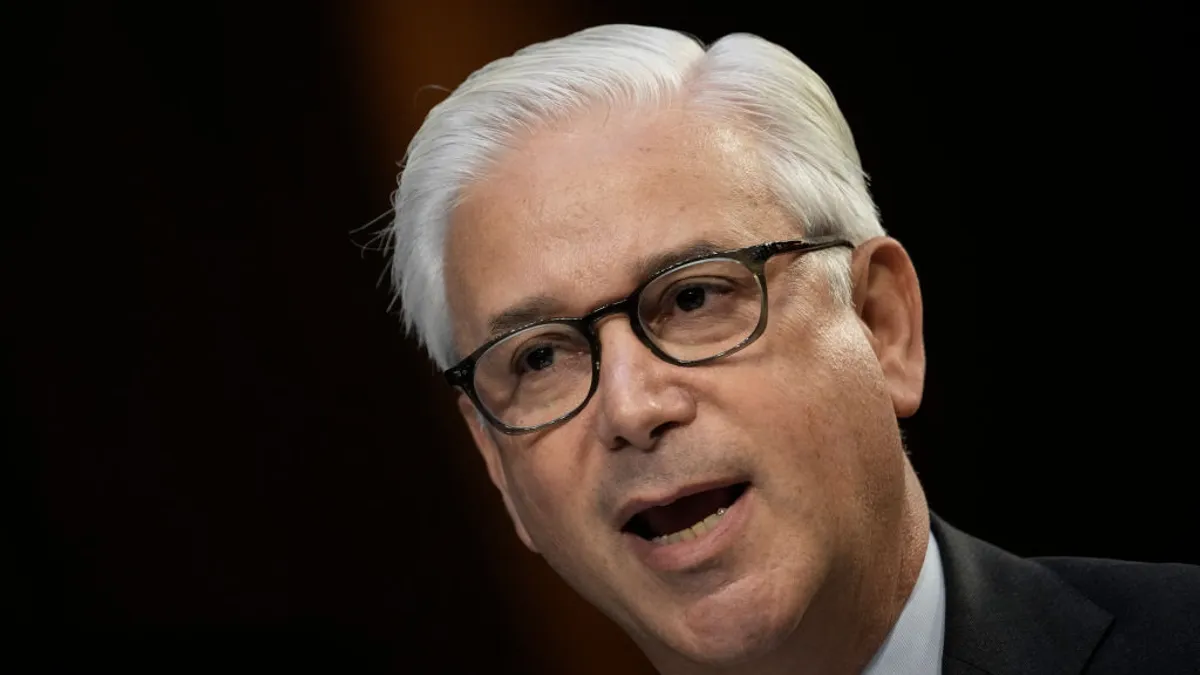Ally Financial is cutting about 2% of its workforce in its second round of layoffs this year, bank spokesperson Peter Gilchrist said this week.
“To better align our organizational structure to our more focused, simplified business model, we made the difficult decision to selectively reduce our workforce in some areas,” Gilchrist said in a statement seen Monday by the Charlotte Observer. The Detroit-based bank’s corporate center is located in Charlotte, North Carolina.
Most of the affected positions are at the manager level or above, Gilchrist said. Affected employees will receive their full salary and benefits for the remainder of the year, in addition to separation packages, he said. The bank has about 10,000 employees.
Ally last announced layoffs in January – encompassing less than 5% of its workforce. That month, the bank said it would sell its credit-card business to CardWorks and Merrick Bank for an undisclosed sum.
Ally also announced in January that it would fully exit its mortgage business – weeks after Ally CEO Michael Rhodes said the bank no longer originates mortgage loans to its balance sheet.
“We remain confident in our long-term strategy and our ability to deliver compelling returns given the strong underlying trends in our core businesses,” Gilchrist told Banking Dive in January. “While decisions involving our teammates are never easy, we believe they will help us more effectively and efficiently deliver for our customers and stakeholders, and we’ll continue to be diligent in our expense management going forward.”
The digital lender is hardly the only bank mulling downward tweaks to its headcount. Executives at three of the nation’s four largest banks Wednesday offered insights into the future of their workforce numbers.
“It's likely we'll have less headcount as we look forward,” Wells Fargo CEO Charlie Scharf told Reuters in an interview Wednesday. “We'd like to do [as] much of it through attrition as possible.”
Meanwhile, Holly O’Neill, president of consumer, retail and preferred banking at Bank of America, indicated Wednesday the bank wants to further trim the workforce of its consumer-banking segment.
Bank of America has cut headcount in its consumer segment by nearly half – from 101,000 to 55,000 – over the past 15 years, according to a presentation shown Wednesday as part of the bank’s first investor day since 2011.
The specter in some of the headcount chatter is artificial intelligence.
“The opportunities that exist in AI are very significant, and anyone who sits here today and says that they don't think they'll have less headcount because of AI either doesn't know what they're talking about or is just not being totally honest about it," Scharf said Wednesday.
At the same time, Scharf’s competitor and onetime mentor, JPMorgan Chase CEO Jamie Dimon, said headcount at his bank will probably remain steady or rise – if “we do a good job” at rolling out AI innovations.
“We always redeploy,” Dimon said Wednesday, according to Bloomberg.
On a broad scale, Dimon noted, AI will reduce the human workload in many roles, but “it will also create jobs.”
Scharf, meanwhile, is no stranger to headcount reduction. After he took charge at Wells, the bank drafted plans to cut tens of thousands of jobs – while evaluating which business segments remained “core.”
“Headcount is the outcome of the conversations that we have about 'we're way too inefficient, we're way too bureaucratic, we have way too many processes inside the company that don't add value,'" Scharf said Wednesday.
Among the biggest differences, though, between when Scharf began as Wells CEO and now is that the bank is allowed to grow again.
Wells’ assets now exceed $2 trillion, Scharf noted Wednesday. The bank’s asset total had been capped at $1.95 trillion for seven years by the Federal Reserve – until June – as the lender resolved issues outstanding from its 2016 fake-accounts scandal and other matters.
"We now can grow our checking accounts, we can grow deposits alongside that, we can grow the rest of our lending products,” Scharf said. “Literally every one of the businesses we have plans to grow utilize the balance sheet.”
Scharf said the bank does not feel pressure to grow through mergers and acquisitions.
“We have amazing opportunities in every one of our businesses. We have scale in everything that we do," he said. “We think [our future] is going to be extremely bright, with or without something that's inorganic."
Scharf, however, did not swear off M&A completely, saying the bank could be interested in buying another lender "at the right price," given an appealing region.






















